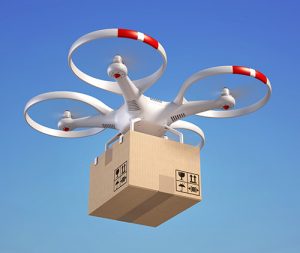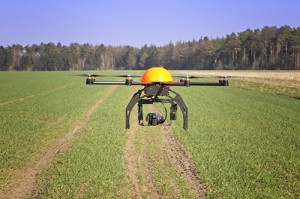I recently ran across an interesting collection of YouTube videos called the Dead Mall Series. This series is filmed and narrated by Dan Bell and has nothing to do with suburban zombies but highlights our changing shopping habits. Bell tours and films shopping malls that have an 80 to 90% vacancy rate and then dubs in a personal narrative about his experience. It is a stark reminder that our buying habits have changed significantly since the 1960s, partly due to the popularity of online shopping. In watching these videos, I think not only about our changing retail experience but also about how the entire supply chain has evolved. Instead of driving to suburban shopping malls supplied by large trucks, we place orders online and our purchases are delivered to our doors by UPS or FedEx or USPS. While the video series shows declining retail shopping, this blog examines how transportation is changing to keep up with our new demands.
Trains
In the U.S. trains are used primarily for transporting industrial products such as lumber and chemicals, but are seldom used for retail products. Part of the reason is that we do not have an extensive infrastructure of stations, unlike in Europe. In Europe, the German Aerospace Center is working on next generation trains for both passengers and freight. They are proposing a train system that is more flexible and can get closer to filling retail orders. There the train is the backbone of retail delivery not the large trucks we see on our highways. In the U.S., the nearest train station may be 50 or 100 miles from the customer.
Trucks
Tesla CEO Elon Musk recently revealed that Tesla plans to unveil an electric semi truck in September 2017. The company previously announced it is working on vehicles other than autos. It makes sense Tesla would go after this market, but I think they will need to somehow extend the battery range in order to make it viable. The Model S runs 265 to 300 miles per charge. Large trucks travel constantly with two drivers and can go approximately 1000 miles between stops. Batteries are generally heavier than fuel for the amount of energy output, so electric planes don’t make sense yet and electric semis may need some newer technologies to make them mainstream.
Now, if you could outfit an electric semi truck with autonomous or semi-autonomous capability then you would have something. An autonomous truck made a beer delivery from Ft. Collins to Colorado Springs, CO in October 2016, so it has been done. This could be the next wave of truck delivery.
Drones
Amazon launched Prime Air in December 2016 and completed the first two deliveries via drone. An Amazon video shows a small package that took 13 minutes from purchase to delivery. Amazon plans on increasing the customer count eligible for this service to dozens and then hundreds. A customer would have to live close to a fulfillment center in order to get the prime service. Apparently, next day or even same day delivery is no longer fast enough.
Thoughts
There are many pieces that make up retail sales and delivery, and companies are using technology to efficiently move goods to customers. Whether in the future we see a sky full of drones or a road full of electric autonomous trucks is anyone’s guess. Shopping options are definitely changing and the supply chain will have to change as well in order to keep up. What do you think the future holds? Let me know your thoughts.
Kelly Brown is an IT professional and assistant professor of practice for the UO Applied Information Management Master’s Degree Program. He writes about IT and business topics that keep him up at night.



